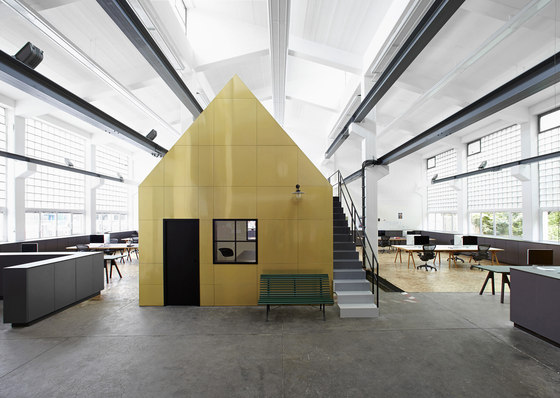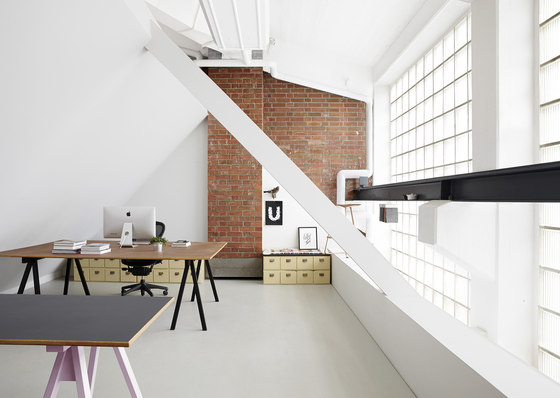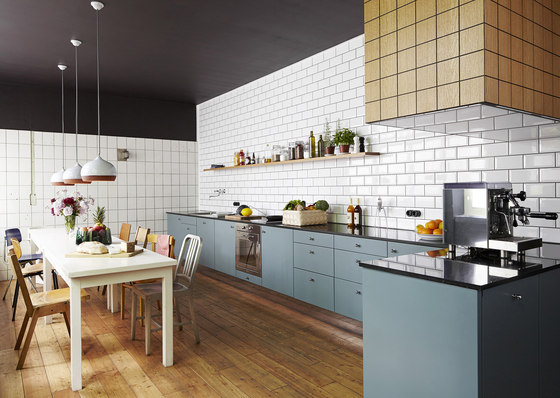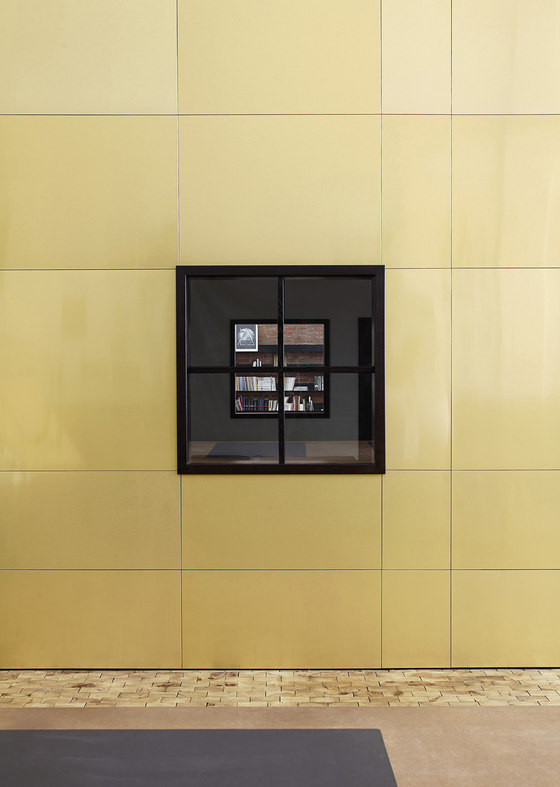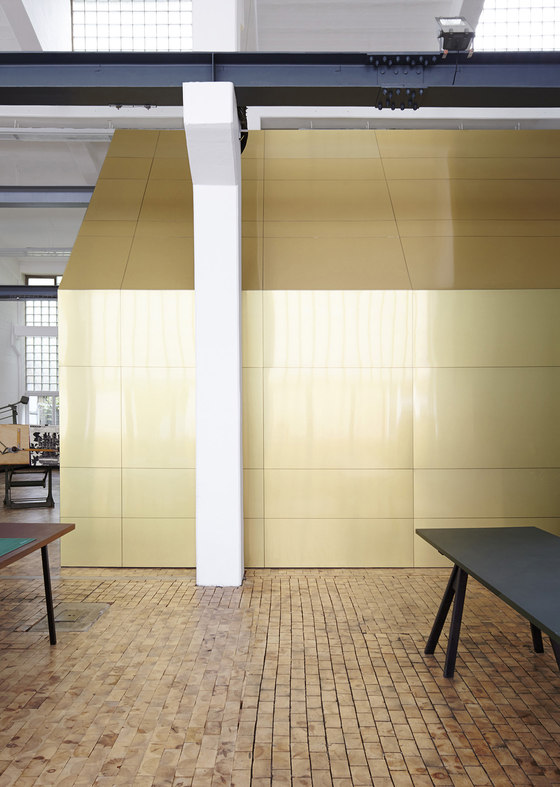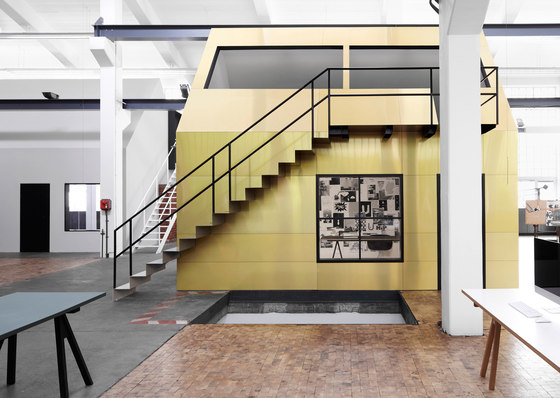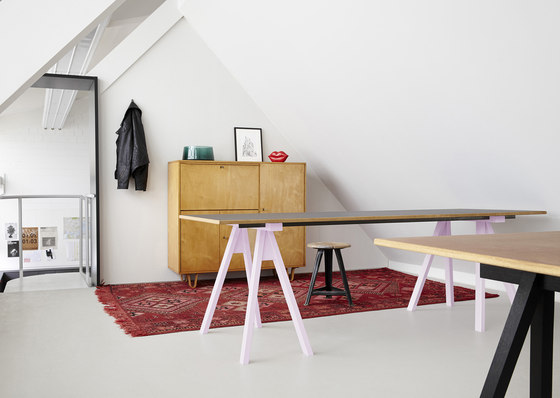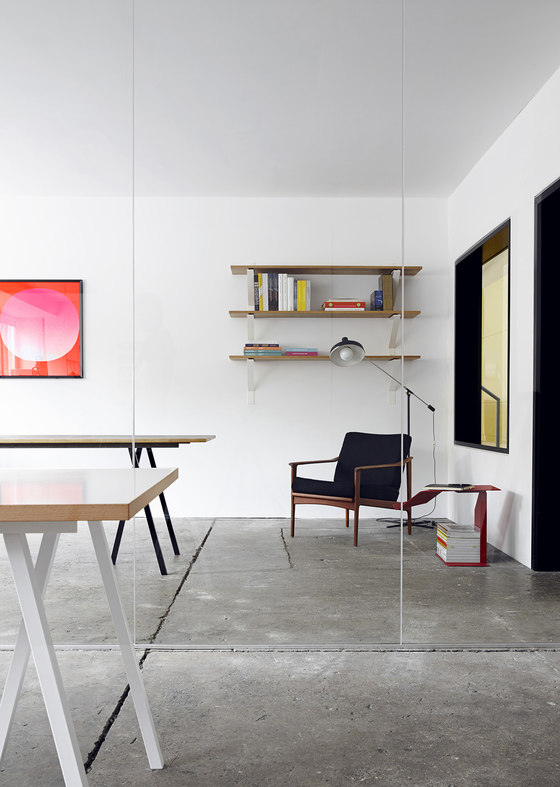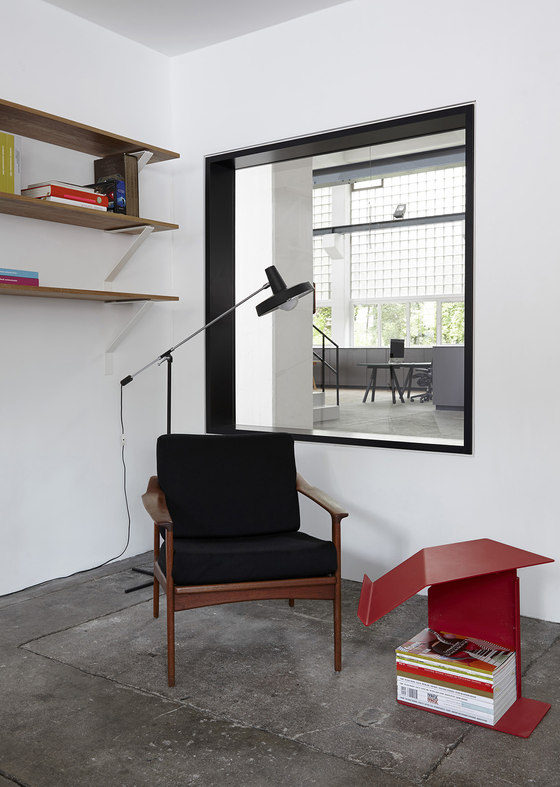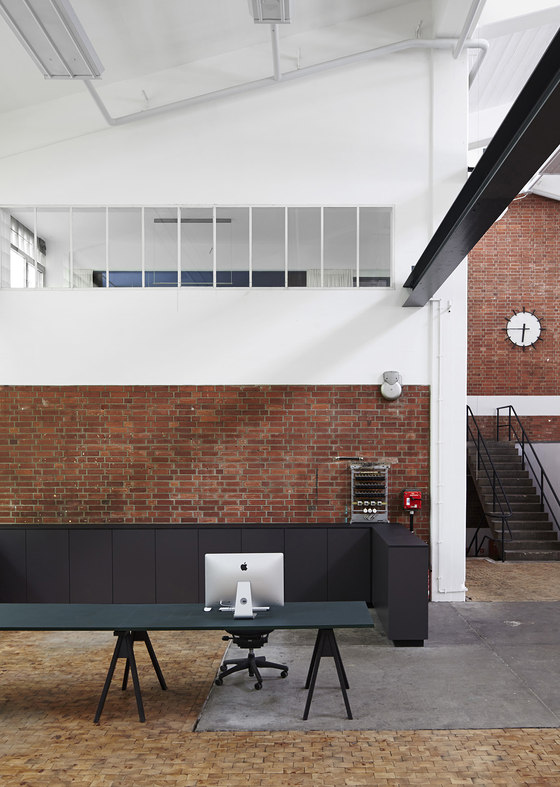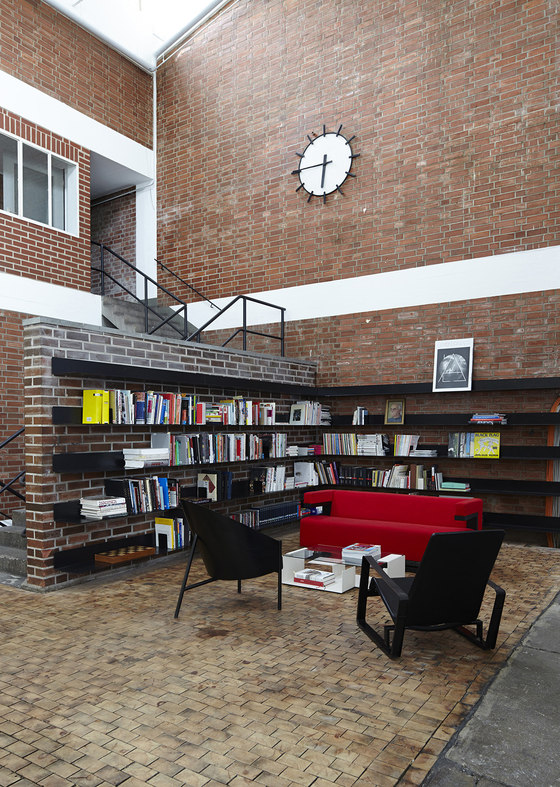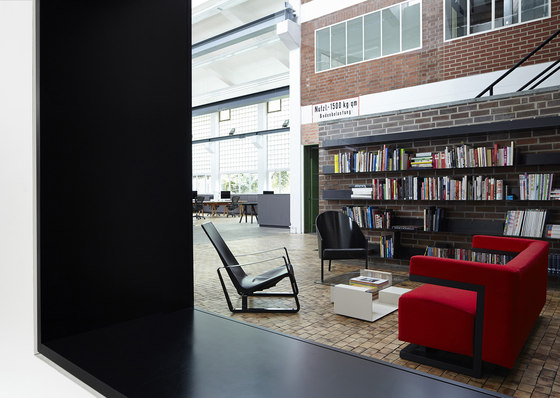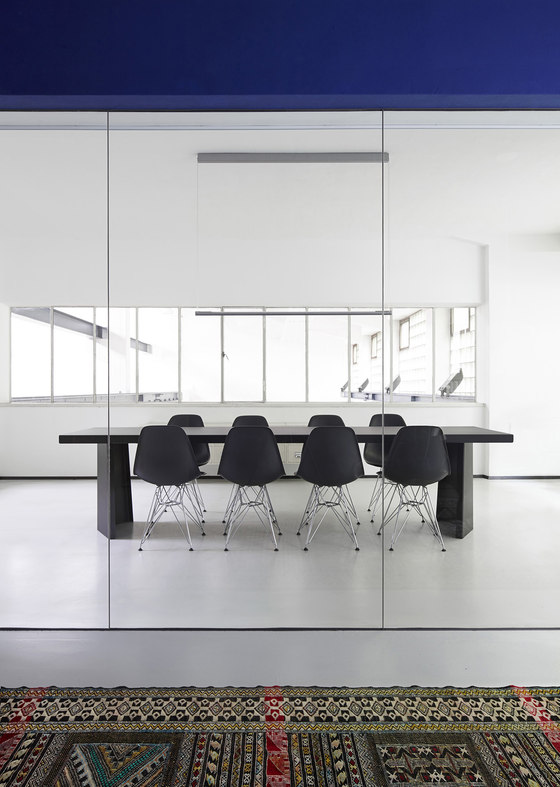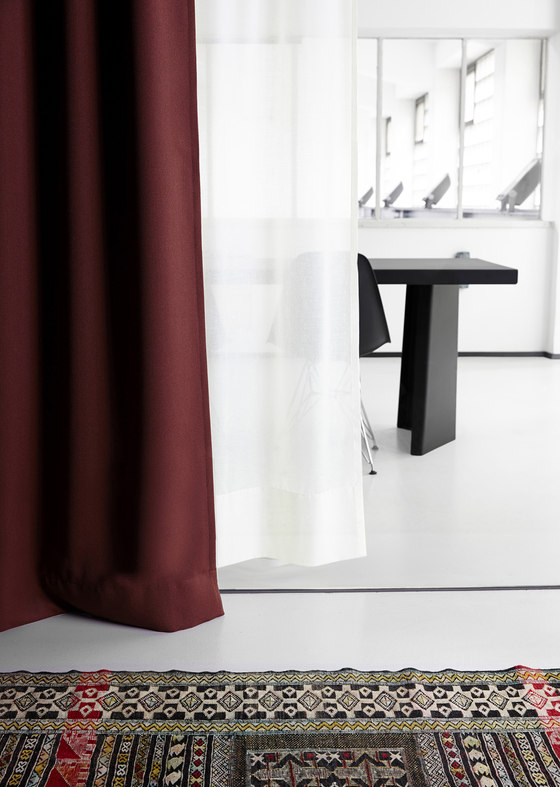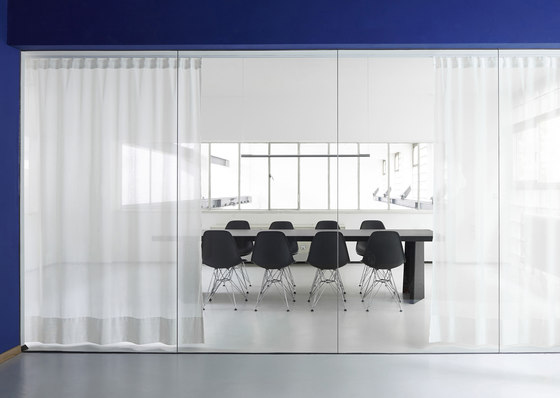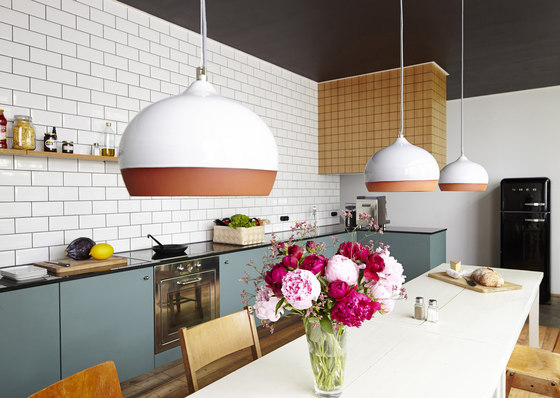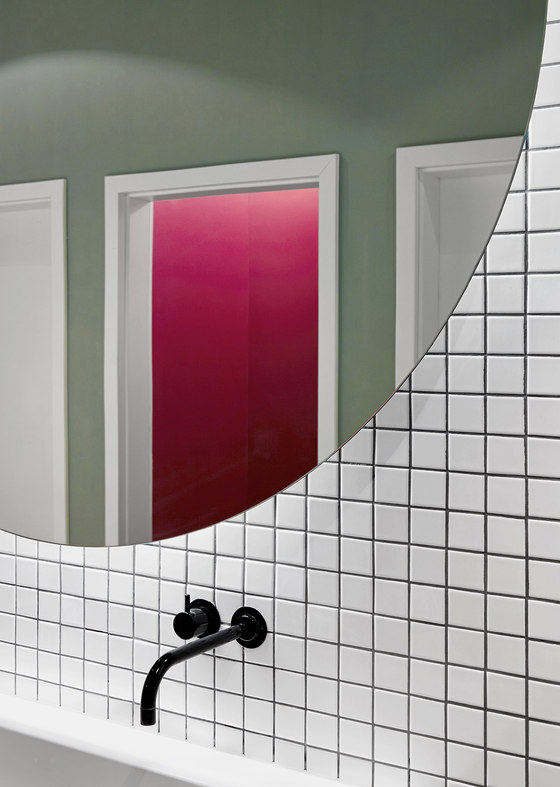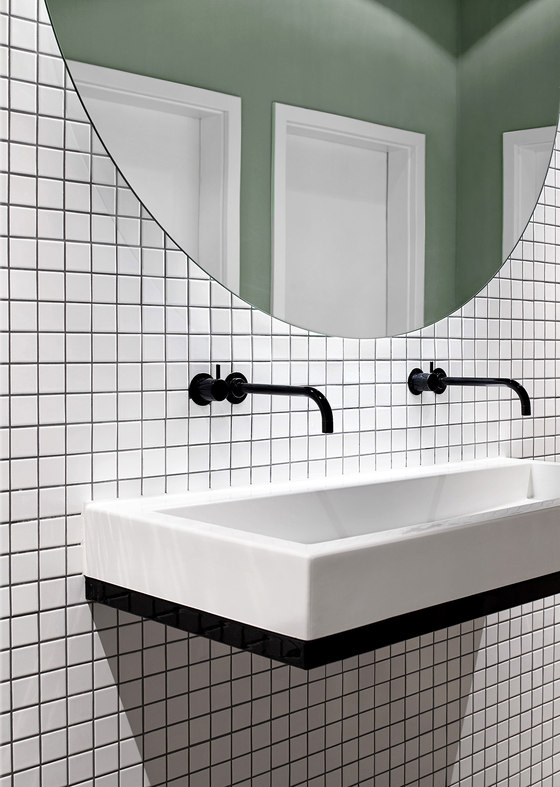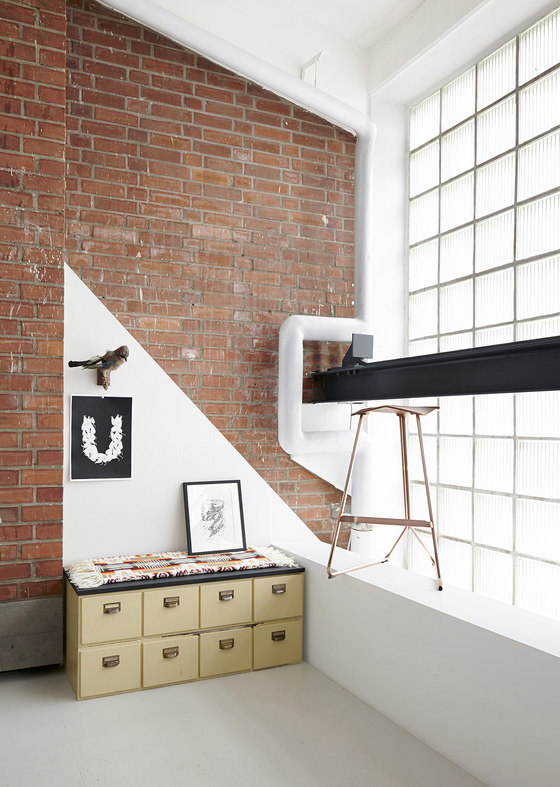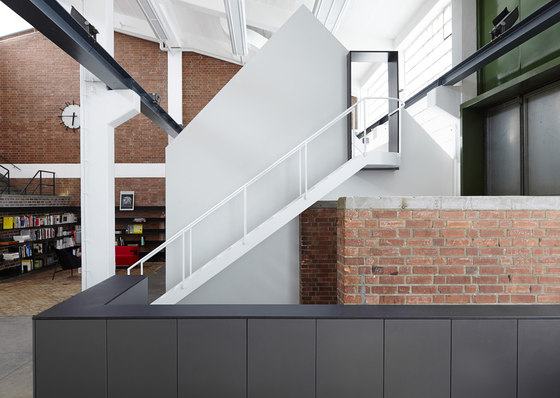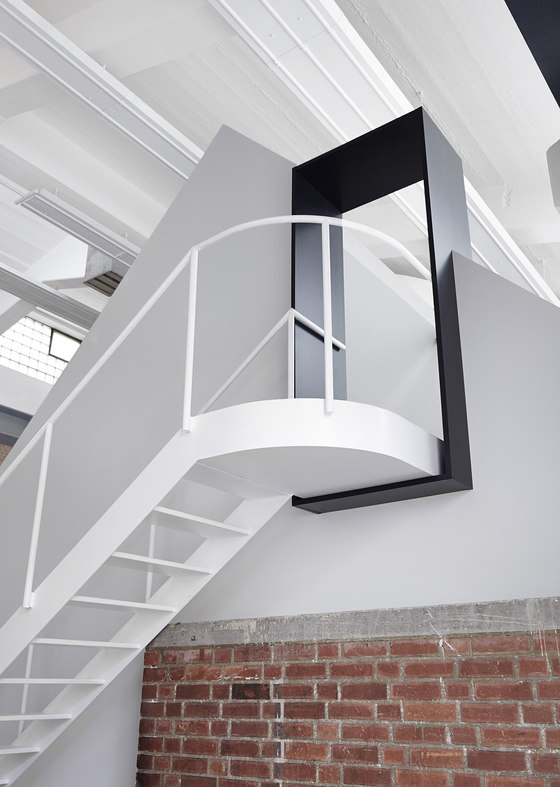A former industrial complex from the mid-20th century, with 650 square metres of hall space and visible traces of its previous use as a machine shop: an elevated foreman's office once used for supervising shop-floor operations tells a tale of order, streamlining and clear-cut hierarchies. For Designliga, this legacy of German industrialization is a mirror reflecting the quintessence of work, and an inspiration to examine the meaning of work in our contemporary age.
Designliga, the bureau for visual communication and interior architecture and design, took a former industrial machine shop and created a new working environment for its own staff and for Form & Code, its strategic partner in Web and application development.
Starting-point
The hall has a rectangular footprint and ceilings over 10 metres in height at their highest point. The east and west sides are built of glass bricks and incorporate a row of windows at eye level. The hall is thus flooded with a consistent level of glare-free light. Flooring combines areas of cross-grained larchwood parquet with concrete, adding visual structure to the hall. Exposed crane tracks and heating elements extend throughout the entire hall. Part of the interior is two-storey; what was once the foreman's office overlooks the hall and the entrance, which is flanked by two brickwork walls.
Existing features and changes
The floors, brickwork and crane tracks from the former machine shop were retained and merely cleaned and painted. A pair of two-storey ridge-roofed 'house' enclosures now stand at the heart of this atmospheric setting, forming the most striking architectural contrast. A key component of the space planning concept, they establish distinctive areas and give structure to the hall space around them without the need for formal boundaries. The 'houses' are used by staff involved in extensive telephoning, planning or working with confidential information.
Workspaces are distributed around the outside walls of the central brass-finished 'house'. They are bordered by an 85-metre length of sideboard, which serves as a reception desk at one end and separates work areas from the circulation space at the other.
The area between the two houses forms a 'village square'. This point is the intersection of both axes of the interior: from entrance to conference rooms, and from workspaces to kitchen. The 'square' extends into an open-plan library area'.
The two foreman's offices on the upper floor were converted into conference rooms with contrasting styles – a functional room with classic conference equipment, and a salon for informal meetings. The solid wall between the two offices was removed and replaced with glass. The kitchen and toilets are situated on the ground floor immediately underneath the conference rooms. A steel door separates these private areas from the hall's work area.
The basement houses a model-building workshop, a screen-printing press and a photographic studio and can be viewed through a glass section in the floor.
Concept
The design concept was inspired by the dynamic interaction between architectural atmosphere, the modern digitally focused world of work and the contemporary search for intimacy and material substance. CEO and Creative Director Sasa Stanojčić and Christina Koepf, Head of Interior Architecture and Design, express it thus: "We aimed to create a space which immediately creates the desire in anyone entering it – client, colleague or supplier – to explore the place and become a part of it."
Elements saved from the hall's days as a machine shop, such as the large industrial clock, add deliberate references to the industrial age and its core values of rationality, efficiency and entrepreneurial spirit that play such a vital role in creating the atmosphere.
Echoes from the past age of industrial labour blend with the spirit of work in the modern digital age. The natural roles of players within a global network, the permanent state of being 'connected' and the shift from physical production to abstract media have now become a matter of course for all staff. The direct physical confrontation between industry and digitalization hones an awareness of problems such as a loss of direct, 'authentic' experience and a growing longing for substance and personal commitment.
Restoration of closeness may be an answer. The 'village' is the core element in the design of the hall, generating identity and serving as a symbol of manageable scale, proximity and personal involvement. The ridge-roofed houses, the village square with park bench and the open-plan working areas in the 'garden' around the brass-walled house create a grounded, tranquil atmosphere. The kitchen is equally important in establishing a feeling of connection and is used for personal free time, together and individually. It features homely elements including a large dining table, individually grouped chairs, lamps and refrigerator with rounded, appealing lines, and a window overlooking green spaces, all serving to unite the 'villagers' in a familiar and intimate community.
The new village creates a working environment for the companies' total of 30 staff in which work once again becomes solidly grounded and creativity can be a natural part of life.
Designliga
